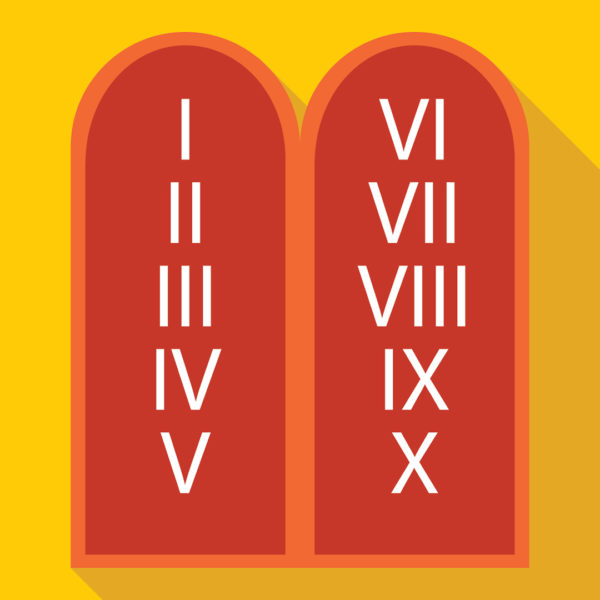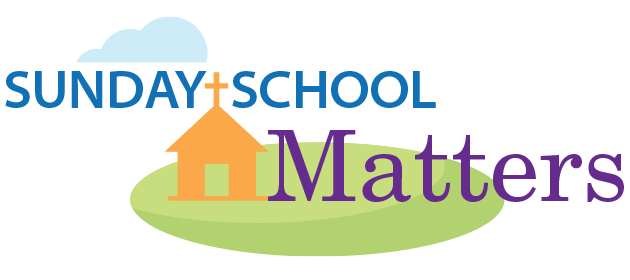Evaluating Sunday School Materials
As shared in the first post about evaluating Sunday School materials, curriculum is a key ingredient in the recipe for a good Sunday School. This post offers additional theological guidelines that pastors and other congregational leaders should use in discerning whether or not to utilize a particular curriculum in the Lutheran Sunday School. Diagnostic questions are included after each section to help you analyze a given curriculum.
How Does the Curriculum Connect to the Catechism?
Paul exhorted Timothy to “follow the pattern of the sound words that you have heard from me, in the faith and love that are in Christ Jesus” (2 Timothy 1:13). The Small Catechism was prepared by Martin Luther to be just such a pattern of sound words. Early Lutherans even called the catechism “’the layman’s Bible’” because everything necessary for a Christian to know for salvation is included in [it], which is handled more extensively in the Holy Scriptures” (Epitome of the Formula of Concord, Summary, paragraph 5). The catechism shows us repentance, faith, and holy living.
A Lutheran Sunday School will benefit by using a curriculum that incorporates the catechism into the lessons at a level appropriate to each age group. In this way, the catechism will be seen as a book to be utilized throughout the life of the Christian and not simply as a textbook for confirmation instruction. Using the catechism in the Sunday School assists in laying the foundation for more substantial catechesis both in confirmation class and throughout your students’ lives. A good curriculum draws out connections between the biblical narrative and chief parts of Christian doctrine embodied in the catechism.
Diagnostic Questions
- Are portions of the catechism related to individual lessons? For example, does a unit on prayer incorporate the explanation of the Lord’s Prayer from the catechism?
- Does the curriculum make provision for learning parts of the catechism by heart in a way that is appropriate to the age level of the student?
How Are Liturgy and Hymnody Incorporated into the Curriculum?
Our teaching is drawn from the Scripture, confessed in the catechism, and expressed in the hymnal. A good Sunday School curriculum facilitates the use of all three books. The curriculum should assist teachers in drawing connections with the liturgy and hymnody of the Church. In this way, the Sunday School both presupposes the Divine Service and leads children back into the liturgical life of the Church with greater awareness of what our Lord Jesus Christ does through His Word and Sacrament.
The curriculum should incorporate liturgical response, hymns, and collects for actual worship within the classroom to increase each student’s ability to participate in the church service. Lectionary-based lessons coordinated with the Church Year work well as the Sunday School reinforces themes that the students hear in worship.
Diagnostic Questions
- Does the material utilize Lutheran liturgy and hymnody?
- What provisions are made for worship within the classroom?
- To what extent are the lessons coordinated with the Church Year?
How Does the Curriculum Teach Christian Vocation?
The Christian life has a dual focus. To borrow the language of Luther, Christians live outside of themselves in Christ by faith and in the neighbor by love. Being comes before doing. We are not saved by our love but through faith in Jesus Christ. Our good works do not make us Christian, but the Christian is busy and active in a life of good works. God does not need our good works, but the world does. The life of good works is lived out in the place of our calling—in the family, congregation, community, and workplace. Freed by the Gospel, the Christian now lives a life of service not in order to gain salvation, but to serve the well-being of the neighbor. The Christian life is not one of achievement and self-fulfillment but of servanthood.
It is essential that the distinction between being and doing, grace and works, faith and love be clearly articulated in the curriculum. Only then can we avoid moralism, with students firmly anchored in the saving Gospel of Jesus Christ. The curriculum should give evidence of applications not only in church life but also in the realms of family, citizenship, and the workplace.
Diagnostic Questions
- How does the curriculum express vocation?
- Are the applications chiefly in the care of “church work”?
- Are good works seen as a fruit of faith directed toward the neighbor, or is the Christian life portrayed in a moralistic fashion?
- Does the material distinguish between the royal priesthood and the Office of the Holy Ministry? Does the material contain inappropriate references to women serving as pastors (1 Corinthians 14:33-35; 1 Timothy 2: 11–14)?
Adapting Curriculum
Even the most well-written, biblically accurate curriculum may still need adaptation to fit your congregation’s specific situation. The reality of the number of students in your Sunday School could require combining two or even more grades together. Some Sunday Schools are so small that they only require one teacher. By contrast, some Sunday Schools are so large that they may have multiple classrooms of the same age students. In each of these cases, it is helpful to choose a curriculum that offers flexibility. Look for a curriculum that offers levels that allow adaptation concerning grade levels. The best materials are divided more by students’ reading abilities rather than specific grade levels. Don’t be afraid to use the materials for a lower or higher level if they are a better fit for your specific group of students.
A unified curriculum, where all levels of students are studying the same Bible text or story, allows for greater adaptation, especially by the small Sunday School. The teacher needs only to prepare to teach one story, while adapting materials for two or three levels of students.
For the larger Sunday School, consider materials that offer the flexibility of use in a large-group/small-group format. In this case, you need materials that follow the same Bible story or text as well as the same sequence of steps across a number of grade levels. This allows one or more “master teachers” to tell the Bible story with the large group, while small-group leaders do the follow-up questions and activities with their small groups.
Don’t be afraid to enlist the assistance of a professional educator or your director of Christian education when making curriculum choices or adapting a curriculum. Their training and background could prove particularly helpful in adapting a curriculum for your church’s Sunday School.
Conclusion
The goal of a careful evaluation of a proposed Sunday School curriculum is to let the Word of God have free course so that Christ’s lambs are fed with His precious Gospel, built up in the true faith, guarded from destructive teaching, and equipped for their vocation in the world as baptized children of the heavenly Father.
















